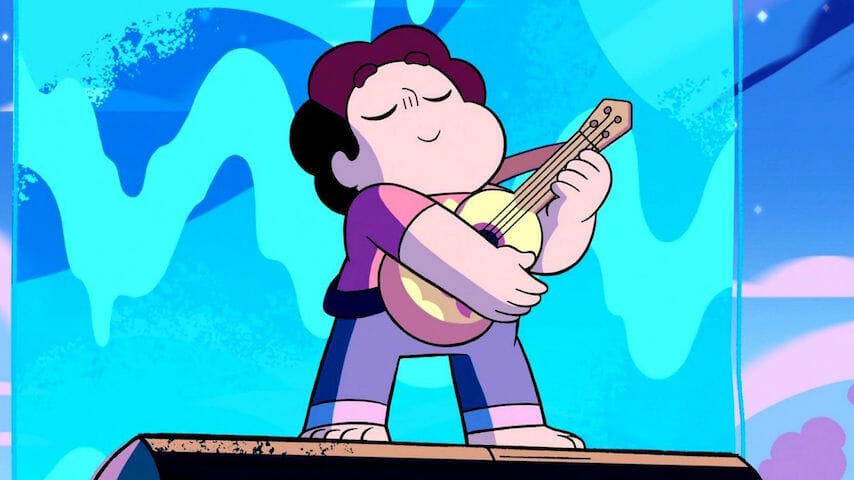How Steven Universe Taught Me to Embrace My Neurodivergent Identity
Photo Courtesy of Cartoon Network
When I started watching Steven Universe, I was a 14-year-old with a lot on my mind. I was experiencing one of the most difficult years of my life, as I felt increasingly isolated from my peers and kept unrealistic expectations for myself to succeed academically, brutally berating myself when I failed to live up to them. As someone coming to terms with having both autism and ADHD, I felt inferior to neurotypical people nearly every day.
I thought Steven Universe, a show about a young boy who fights monsters alongside his three alien rock moms called the Crystal Gems, could be an escape for me. Instead, this silly cartoon about space rocks ended up offering something more. Directly or indirectly, Steven Universe taught me time after time about the importance of empathy, patience, and understanding toward others, but especially toward ourselves.
Steven Universe is about many things, but the core theme and message stressed again and again with its different characters is how love, both of others and of ourselves, can help us persevere through life’s hardest challenges. Each of Steven Universe’s main characters, including Steven himself, suffers from a different kind of self-defeating behavior they must eventually cope with and navigate.
At the show’s inception, Amethyst views herself as a weak, useless “mistake,” having been born late and shorter in height than other Amethysts in the Kindergarten. Pearl suffers from her unrequited romantic obsession with Steven’s mother, Rose, who died to create Steven and thus left Pearl in a constant state of mourning. Even Garnet, the seemingly infallible leader of the Crystal Gems, struggles when the two members of her fusion, Ruby and Sapphire, have to be apart.
Similar feelings of inadequacy have persisted throughout my entire life. People with ADHD typically receive 20,000 more negative comments than their neurotypical peers by the age of 12, which can become internalized and lower self-esteem. And although I couldn’t find a study connecting autism with increased criticism, I’ve lost count of the number of time-outs, detentions and even suspensions I got as a child for behavior I never learned was inappropriate until much later. Much of my youth was characterized by being viewed as a weirdo by peers and a screw-up by teachers and authority figures. By 14, I believed they were right.
For these reasons, I felt a connection to Amethyst’s character the most, the one at first considered to be the most immature of the Crystal Gems. Especially early on, Amethyst appears irrational and uncontrollably goofy, causing mayhem just for the fun of it and making jokes at inappropriate times. But as the show progresses, Amethyst is shown to be more than just comic relief. Her behavior stems from a lack of self-worth and a desire for attention, even if that attention is negative. As the “class clown” throughout my youth, that examination of why someone would feel drawn to act out was an uncommon display of empathy toward “troublemakers” which helped me reflect on my own behavior.
But Amethyst isn’t left to wallow in her own misery. Over the course of the show, she grows both her powers and maturity, showing more resilience in times of uncertainty because of having faced and overcome her own insecurities. In Steven Universe Future, a limited series that serves as an epilogue to the main show, Amethyst becomes a counselor for other gems, helping them find their place and purpose in the world.
-

-

-

-

-

-

-

-

-

-

-

-

-

-

-

-

-

-

-

-

-

-

-

-

-

-

-

-

-

-

-

-

-

-

-

-

-

-

-

-








































